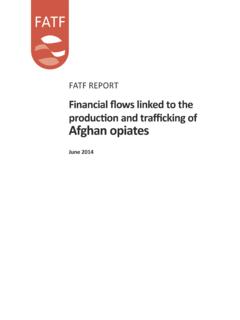Transcription of TREES - New Mexico State University
1 , -------~..-----~~ ~"'*----.. TREES -}..' ~ i .. :. A Valuable Great Plains Multiple Use Resource FORESTRY COMMITTEE GREAT PLAINS AGRICULTURAL COUNCIL JUNE 19, 20, 21, 1978 TULSA, OKLAHOMA PROCEEDINGS - Thirtieth Annual Meeting ' Ploln' "orlcultutol Council PuA,licolion NO, 81 afghan PINE (Pinus brutia var. e1darica): A Potential She1terbe1t Species for the Southern Great Plains James T. Fisher and Fred B. Widmoyer1 A pine species introduced from southwest Asia more than 15 years ago has shown excellent survival, growth rate, and crown form in the Southwest.
2 Tolerant of low rainfall, intense solar radiation, and alkaline soils, it is ideally suited to appropriate sites in the southern Great Plains. This area is bordered on the east by the 98th meridian, the west by the eastern foothills of the Rocky MOuntains, the north by the Arkansas River, and south by a line extending the southern boundary of New Mexico eastward. Introduction, Taxonomy and Natural Distribution Present confusion concerning nomenclature necessitates mention of the introduction of the pine and its taxonomic affinities. In July 1960, Harlan, an agricultural explorer for the Crops Research Division, USDA, collected seeds of a pine in southern Afghanistan in or near the town of Laskargah, in the He1mand Valley (2).
3 He was unable to identify the pine but was informed that the observed TREES were probably grown from seed collected near Herat. His notes stated that the pine was: very fast growing; able to withstand very hot weather; planted extensively in south ern Afghanistan; and might be grown for Christmas TREES in the United States (7) Seedlings subsequently grown at the Plant Introduction Station, . Glen Dale, Maryland, were distributed to cooperators in the fall of 1961 (7). Stored seed provided a second distribution of seedlings in the spring of 1964.
4 Seedling recipients included .Widmayer, New Mexico State University , the Institute of Forest Genetics ( Forest Service, Placerville, ~a1ifornia), and the southern Great Plains Field Station (Woodward, Oklahoma). The original collection was labelled 271431. A collection was made near Herat in 1965. Because it was not certain that this and the previous collection were from identical sources, a new number was as~igned, 303638. Taxonomy of what wa~ subsequently called afghan pine, Monde11 pine, and Quetta pine has puzzled nurserymen and conservationists.
5 Harlan omitted species (Pinus ), making no serious attempt at classification. Fisher stated that collection 271431 had been identified I. ha1epensis Miller. This seemed to support Aitchison's 1881 record of a collection of "Pinus ha1epensis" (Aleppo) pine in Afghanistan (2). However, it is our view that Critchfield's classification of the pine as I. brutia var. e1darica provides the clearest interpretation (2). He reported that "the low elevation pine of Afghanistan is a cultivated race belonging to the P. brutia group". He added that it is probably derived from P.
6 E1darica, itself a subspecies or variety of P. brutia via Persia, where it has been cultivated for several centuries. Available to Critchfield were herbarium materials, living specimens of 271431, and information filed on its cone, seed and shoot characteristics. Frederick Meyer, taxonomist, lAssistant Professor of Silviculture and Professor of Ornamental Cx:ops, Horticulture Department, New Mexico State University , Las Cruces. 104 national Arboretum, concluded in 1971 that the Afghanistan pine was not !. halepensis. Throughout this paper, afghan pine and P.
7 Eldarica should be considered synonomous with P. brutia var. eldarica. is used when necessary to cite research-reported under that scientists and foresters working for the United Nations in southwest Asia refer to P. eldarica Medw. Overlap of natural ranges, natural hybridization, and-absence of distinct foliage differences make separation of !. halepensis and!. brutia difficult in some areas (16). The!. halepensis/brutia complex thus receives considerable reference. The complex belongs to the subgenus Pinus, section Pinus, and subsection Sylvestres (4).
8 In a~dition to the major species, !. brutia contains variants !. eldarica and!. pithyusa (4). Present ranges of pines in the Mediterranean area have derived from nature but also from great disturbances caused by man's excessive utili zation, fire and domestic animals. Distributions are as follows: !. halepensis is the most widely distributed pine of the Mediterranean region and ranges from eastern Spain through France and Italy, to the Adriatic coast of Yugoslavia, and to Greece, Turkey, south to Jordan and Israel, then westward to Libya, Tunisia, and Morocco.
9 P. brutia replaces !. halepensis for the most part in the eastern Aegean region, Turkey, the Islands of Crete and Cyprus, and in the Black Sea region. Ranges of the two overlap in northeastern Greece, where they hybridize, in southeastern Turkey, and a few other isolated areas (4,16). In the Black Sea region are!. eldarica and!. pithvusa where the latter grows along the northern and northeastern shores of the Black Sea. !. eldarica, considered an Oligocene relic, is confined to a single low mountain in a semi-desert environment southeast of Tbilisi, Georgia, Transcaucasia.
10 It grmvs along the eastern extremity of the Choban-Dagh Range, along the south side of the Iori River and occupies only 1400 acres (550 hectares). In accordance with Critchfield, the afghan pine should be classified as a variety or subspecies of P. brutia. This is justified by morphological and chemical difference within the complex. P. brutia generally has a straighter stem, finer branches, larger branch angles, and wider needles than!. halepensis. However, all but cone and seed characteristics seem to break down in areas of overlap (16).






